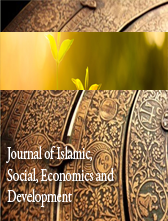ENGAGING UNINTERESTED STUDENTS IN ENGINEERING: IMPLEMENTING LEARNING ACTIVITIES USING THE NOMINAL GROUP TECHNIQUE
Abstract
This research study employs the Nominal Group Technique (NGT) to investigate preferred learning activities in the realm of engineering education, seeking to understand the favoured methods from the viewpoints of educators and students. A small group of experts, comprising 5 educators and 6 students, participated in the study. The investigation encompasses a diverse range of teaching and learning methods across three distinct categories: conventional, collaborative, and technology-enhanced learning. The findings include the consensus among both educators and students regarding the effectiveness of certain methods such as "Interactive simulations" and "Field trips" as highly preferred. However, intriguing disparities emerge, with educators exhibiting a preference for "Problem-solving exercises" as the top-ranked method, while students notably favor "Debates" and "Brainstorming." Furthermore, "Gamification" stands out as a point of contention, as educators appear less inclined towards it compared to students. Overall, this study highlights the evolving landscape of engineering education, emphasizing the importance of considering diverse perspectives and employing innovative techniques like NGT to enhance teaching and learning practices in this field.













